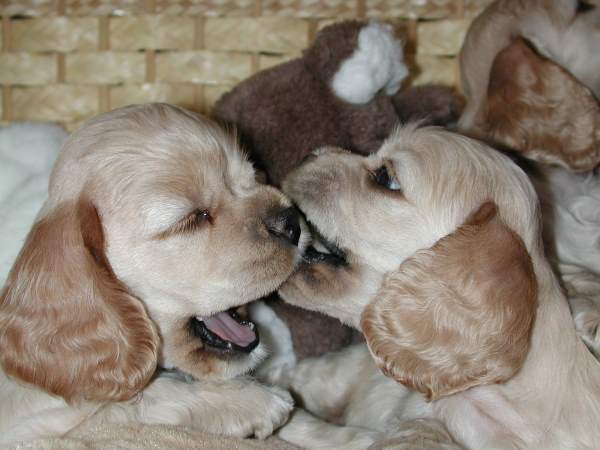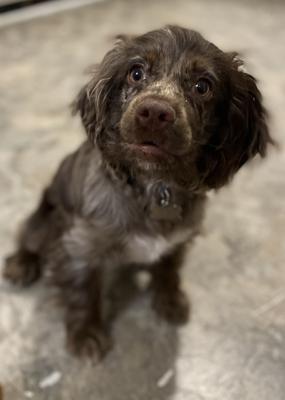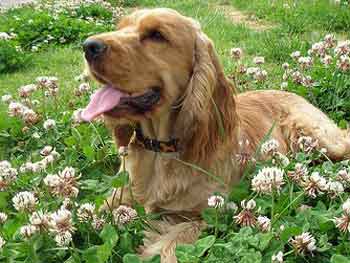- Home
- Puppy training
Top Puppy Training Tips and Techniques For A Well-Behaved Puppy!
You may have many unanswered questions about Cocker Spaniel puppy training, especially if this is the first time you've owned a puppy. Relax; we've got it covered.
You'll find all the tools you need to help your Cocker pup develop into a well-behaved little boy (or girl) in no time!
Happy training!
The Best Way to Approach Cocker Spaniel Puppy Training
Puppies need a lot of training to help them grow into happy, well-behaved adult Cocker Spaniels, but where do you begin?
Well, as a starting point, I recommend you read these 10 essential rules of puppy training first.
These essential rules will help to get you into the right frame of mind and make training your puppy much easier! Having this information under your belt will get your puppy off to the best start he could possibly have.
Come back to this page when you've read through them.
Go ahead; I'll wait for you.
And now that you're back let's look at exactly what type of training your puppy will need.
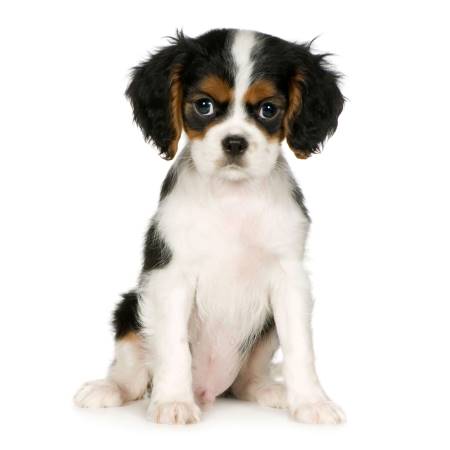 Don't mess with me buster!
Don't mess with me buster!Here are a few quick links to take you direct to the topic you may be looking for:
Potty Training Your Puppy
Your first priority will be to ensure your puppy is fully house-trained (if he's not already).
When you bring your puppy home from the breeders, he may be partly house-trained, but you must follow on from where the breeder left off and finish the job.
Toilet training your puppy will take patience and understanding, and there will likely be a few little accidents along the way. However, with consistent potty training, your puppy will soon get the hang of it; he'll be dry before you know it!
Follow this link to learn how to potty-train your puppy.
Now, this next bit is about socializing your puppy (no, it doesn't mean he gets to party, although it can be fun!), but your pup must get plenty of it.
Read on to learn more about puppy socialization.
Puppy Training And Socialization
Socialisation is an essential part of any puppy's training. It's how your puppy is gently and gradually introduced to everyday sights, objects, sounds, experiences, and situations.
Socialising your puppy will help remove the fear factor from his little 'human world' and help him grow up relaxed and confident.
Beware of any frightening or shocking experiences at this age, as these can have a negative impact on your puppy's development.
Take it easy, be gentle, avoid sudden loud situations, and take things at your puppy's pace. Don't rush him; keep your pup's socialisation sessions short but regular.
Puppies are more receptive to learning between the ages of 6 and 12 weeks old, so you only have a little time to cram in everything that you need to teach them.
Your puppy's socialisation can't wait; you should begin it as soon as you get him home, usually at eight weeks.
Please don't delay because those weeks will fly over before you know it, so what are you waiting for; get a move on!
Separation Anxiety in Puppies
It's a good idea to teach your little boy to feel comfortable with being alone for a little while each day (even if you're home). If you don't, your puppy may develop a condition known as separation anxiety.
Separation anxiety is just as it sounds.
It's where your puppy becomes anxious whenever he believes you're about to leave the house without him.
Apart from the emotional suffering for both owner and pet, separation anxiety can lead to many unwanted behavioural problems, such as peeing in the house (or worse), barking, howling, digging, scratching, chewing and other destructive behaviours.
An anxious dog can do a lot of damage in the time it takes you to get to the shops and back!
Take immediate action if your puppy begins to show any signs of nervousness or anxiety when you leave the house.
If the worst comes to the worst, you have the tools to teach your puppy to be comfortable spending time alone.
Puppy Training: Biting And Chewing
If you're new to owning a dog, you'll soon discover that puppies bite, and boy, are their teeth sharp!
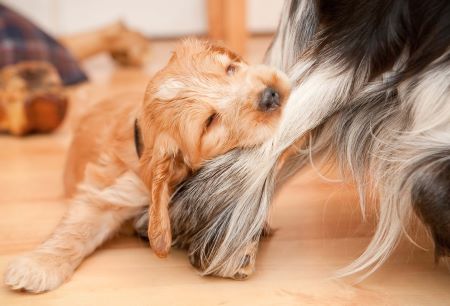 Hmmm, tasty!
Hmmm, tasty!If you're new to owning a dog, you'll soon discover that puppies bite, and boy, are their teeth sharp!
Play-biting is a natural part of your new puppy's development. However, your pup must learn to be gentle and understand that biting humans is not allowed; the sooner he realizes this, the better.
Just be sure to teach your puppy to stop biting before he has the strength to do some real damage! Trust me; adult teeth can do much more harm than little puppy teeth.
The same applies to your puppy's chewing; deal with it as soon as he begins the dreaded chewing phase. If you don't nip it in the bud, your Cocker's chewing and nibbling will likely become a nasty habit, and habits are difficult to break!
Puppies can cause a lot of destruction and despair for owners, problems that would never have happened had the owner addressed their pup's biting and chewing much earlier.
Puppy Training And Obedience
Another area of puppy training that's very important if your pet is to fit into our human world is obedience training.
However, before I explain how to teach your puppy basic obedience commands, I've listed some general puppy training tips to help your training sessions run more smoothly.
I highly recommend you read these tips before training your Cocker Spaniel and always use positive training methods with your baby.
Puppy Obedience Training
Obedience training covers the commands shown below; however, you can skip straight to the puppy obedience training page if you prefer.
Watch! - You can teach your puppy to listen to your every word, and once you've got his attention, it will make training him much more manageable.
Sit! - Puppy training is much easier than you may think, and you'll be surprised at how quickly you can train your Cocker puppy to sit with this simple command.
Down! is an excellent command to teach your puppy. It's slightly more challenging than the rest, but once your pup has mastered it, you'll use it often.
Stand! is command that comes in handy when you need your dog to stand quietly for the groomer or the vet. You can also use this instruction to get your Cocker up from a sitting position and down position.
Be Quiet! - You can teach your puppy to stop barking. It may sound at odds with what you're trying to do, but you teach your puppy to bark (not all puppies do!), and then you teach him to stop barking using the Be Quiet! instruction.
Wait! and Stay! are two very similar commands; one more 'permanent' than the other. Discover the differences between the two and how to teach them to your pet.
Down! and Stay! are two puppy training commands which can be very effective when used together. I use them to keep my Cocker in one place for a few minutes while I'm busy.
Using this command keeps him from under my feet for a while. (He's usually preoccupied with being my shadow, and I've almost fallen over him numerous times).
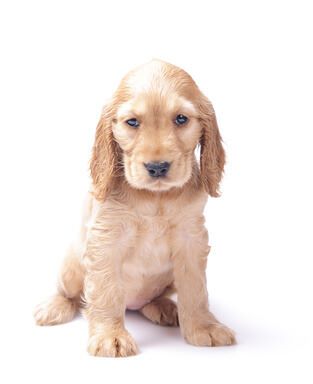 I might look sad, but I'm not, honestly!
I might look sad, but I'm not, honestly!The recall command is essential, and I recommend you sharpen your puppy's response to this training by repeating it whenever you get the chance.
Always reward your puppy for coming back to you. Never scold your pup for returning to you when called, no matter how long it took him or how frustrated you may be.
Leave it! This command is another essential puppy training exercise. It will teach your Cocker to leave something alone and not touch it. You must train your puppy well and strengthen and test this command often.
Drop it! - As well as mastering the above Leave It! command, your Cocker Spaniel must also master the Drop It! command so that he drops whatever's in his mouth as early as possible.
You can't always control what your puppy puts into his mouth, especially when you're out walking. Teaching your puppy to drop whatever he's holding in his mouth when asked is essential, especially if he's picked up something disgusting like a rotting carcass!
Not only will these two commands help to make him a well-mannered pup, but they could save his life at some point!
If you'd like to brush up on these puppy obedience commands, follow the link!
Puppy Training: Walking On A Leash
When you're out walking with your dog, there's nothing worse than being dragged along by an over-enthusiastic Cocker Spaniel!
Does this sound familiar?
Cockers often pull on the lead, which can spoil your walk, but training your puppy to walk on a loose leash while still young will help stop this habit from forming in the first place.
If you leave it too late, your puppy will soon learn that pulling forward on his lead will get him to where he wants to be, and it becomes a frustrating habit.
The longer you leave it, the more difficult it will be to break his annoying habit. Follow these simple guidelines on leash training, and you'll be enjoying stress-free puppy walks in the park sooner than you think!
Cocker Spaniel Puppy Training And Play
Like most training, it shouldn't be all work and no play; puppy training should be fun - for both of you!
But can you believe it, some puppies don't know how to play?
It's true! Sometimes it doesn't come naturally to them, so you may need to teach your little Cocker Spaniel puppy how to play exciting puppy games like those below.
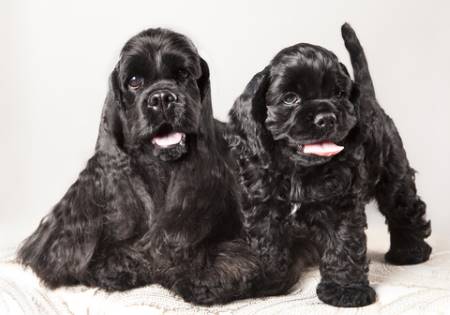 Cocker Spaniel puppies training!
Cocker Spaniel puppies training!Fetch! - throwing a ball and having your dog return with it doesn't always come naturally; sometimes, you must give them a clue!
Hide and Seek is a great game to play with your Cocker Spaniel. I hide, and when Max finds me, I reward him, usually with a treat, a kiss on the nose, and an enthusiastic, 'Good Boy, Max!'.
Tug of War - if your dog shows signs of aggression or dominance, you'd be well-advised to slightly tone this game down. Otherwise, it's an excellent game for tiring them out! You can still play, but there are rules to follow.
Find It! is very similar to hide and seek, except, in this case, I hide treats all over the house and let him sniff them out - it's what Cockers do naturally. It's excellent for stimulating the mind!
Here's a link to all the above puppy games, I hope you and your puppy have lots of fun with them.
Chase Me! can be an exhilarating game for any dog. However, I don't recommend playing chase with a young puppy - at least not until he's fully mastered the recall command.
Puppy Training And Crates
Some pet owners believe crating a dog, especially a young puppy, is cruel.
Please let me put the record straight - crate training a puppy is not cruel. In fact, it's one of the best things you can do for your puppy.
There are many benefits to crating a pup; read this article which lists the benefits for you and your puppy, and then decide for yourself.
A few things can go wrong when teaching your puppy to enjoy his crate; however, you can quickly resolve them when you know how!
If you decide that crating is for you and your pup (and I hope you do, but it's your choice), I suggest you read the essential rules of crate training before you even think about crating your pup.
Once you've done that, you'll need to crate your puppy. Many types of puppy dog crates are available, from plastic to wood to metal, and it's purely a matter of choice.
Follow the link to learn how to crate-train an older dog.
Above all, remember that puppy training should be fun, so keep it light!
Puppy Training and Attention Seeking Behaviour
Living with attention-seeking puppies can become exhausting, no matter how cute they may be!
If this sounds like your puppy, learn how to handle your puppy's attention-seeking behaviour and give yourself a bit of peace and quiet!
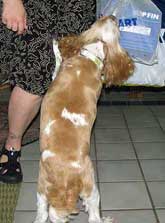 What's in the bag, Mum?
What's in the bag, Mum?Puppy Not Listening?
If you find your puppy dog won't listen to you, you can find out more here:
Help, my dog doesn't listen to a word I say!
Why won't my dog listen to me?
Photo Credits for
Puppy Training:
1. GlobalP at http://www.istockphoto.com/stock-photo-5728070-cavalier-king-charles-spaniel-3-5-months.php
2. The_guitar_mann
at http://www.istockphoto.com/stock-photo-15294622-playful-puppy.php?st=5050048
3. Zbyszek Nowak
at http://www.fotolia.com/id/44179969
4. Lilun at http://www.dreamstime.com/royalty-free-stock-photos-american-cocker-spaniel-puppy-image22371228
5. Visitor Photo




